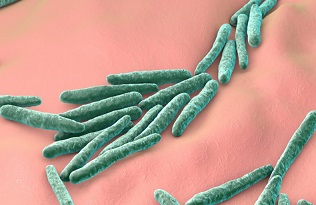U.S. Medical News: U.S.CDC Warns That Leprosy Is Becoming Endemic In Florida!
TMN News Team Aug 02, 2023 2 years, 4 months, 2 weeks, 5 days, 5 hours, 9 minutes ago
U.S. Medical News: A concerning medical trend is emerging in Florida, as reported by the U.S. Centers for Disease Control and Prevention (CDC). Leprosy, also known as Hansen's disease, is making a troubling comeback in the state, with a high concentration of cases reported in Central Florida. Experts warn that the disease may be on the path to becoming endemic in the region, meaning it could have a consistent presence, putting residents and travelers at risk.

A recent research letter published in the U.S. CDC’s journal called Emerging Infectious Diseases also echoed the sentiments of the U.S. CDC.
https://wwwnc.cdc.gov/eid/article/29/8/22-0367_article
The Growing Leprosy Cases in Florida
Leprosy, a chronic infectious disease caused by Mycobacterium leprae, primarily affects the skin and peripheral nervous system. Despite its biblical description, the disease is not easily spread, with about 95% of people having natural protective immunity. However, cases of leprosy have doubled across the country over the past decade, with Florida witnessing a surge in cases without traditional risk factors.
According to the research letter, “Nearly 70% of the new cases reported in the U.S. in 2020 were concentrated in six states, with Florida being one of the top reporting states. Central Florida alone accounted for nearly 20% of the nationally reported cases, suggesting it may represent an endemic location for leprosy.”
Local Acquisition of Leprosy
Historically, leprosy cases in the U.S. were primarily seen in individuals who immigrated from leprosy-endemic areas. However, the new report indicates a significant shift, with about 34% of reported cases between 2015 and 2020 being locally acquired. This raises concerns about potential transmission within the country, either from person-to-person or through contact with animals like armadillos.
Leprosy - Signs, Symptoms, and Transmission
The Mycobacterium leprae bacterium has a slow growth rate, and it may take several years for signs and symptoms to manifest after exposure. Once the infection becomes apparent, the progression of the disease can vary, ranging from two weeks to several months.
Leprosy can manifest with pale or slightly red areas or rashes on the body, often accompanied by a loss of sensation in the affected areas. Other symptoms include dry, stiff, and sometimes painful skin, thinning of the eyebrows and eyelashes (if the face is involved), and nasal congestion. If left untreated, it can lead to weakness in the muscles of the hands and feet.
The disease is primarily transmitted through moisture droplets passed through the air from untreated infected individuals. Although leprosy is contagious, it is not easily spread through casual contact, sexual transmission, or from mother to fetus. Prolonged contact with infected individuals is usually required for transmission.
Armadillos and Leprosy
According to local
U.S. Medical News reports, a g
enetic study conducted by the National Hansen's Disease Program found that armadillos in the southern U.S. carry a high number of M. leprae strains, the bacteria that causes leprosy. While transmission from animals to humans is relatively low, caution is still advised around armadillos to avoid potential infection.
Identifying and Treating Leprosy
Early detection is crucial for successful treatment of leprosy. Doctors prescribe antibiotics to patients, and once treatment begins, patients are typically no longer infectious after a few days. However, the slow growth of the Mycobacterium leprae bacteria means treatment may last between one to two years.’
Conclusion - The Urgent Call for Awareness and Vigilance
As cases of leprosy continue to rise in Florida and other southeastern states, it is essential to raise awareness about this potentially debilitating disease. Timely diagnosis and treatment are vital in preventing long-term nerve damage and disability. The CDC's warning about potential endemicity in Florida should prompt healthcare professionals across the country to consider leprosy as a potential diagnosis, especially for patients with a history of travel to affected areas or prolonged outdoor exposure.
Public health efforts must focus on identifying the sources of transmission within the U.S. and implementing measures to control the spread of the disease. Additionally, education and precautionary measures are crucial for travelers and residents, emphasizing the importance of avoiding exposure to untreated individuals and potentially infected animals.
For the latest
U.S. Medical News, keep on logging to Thailand Medical News.
